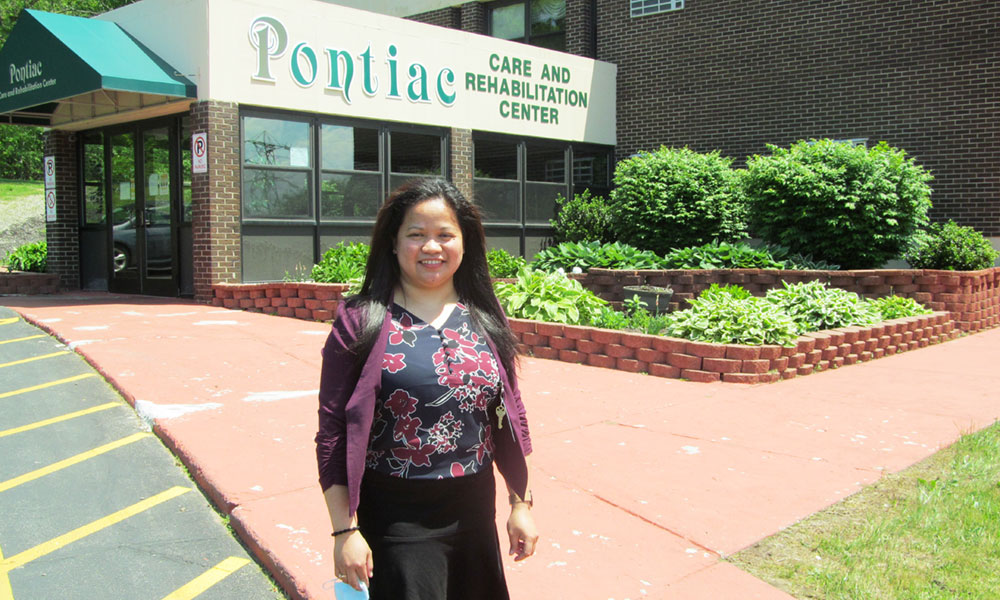Pontiac Care and Rehabilitation Center administrator in Oswego begins process of adapting to ‘new normal’
By Lou Sorendo
Q.: Is the world of senior care changing as a result of the threat?
A.: I think that the ongoing pandemic has shifted everyone’s routine. For instance, social distancing has an impact on the elderly. As caregivers, we do everything we can with the resources provided to slow the acceleration of the virus to our residents. We protect them from the virus while striving to cater to their mental health.
Stephen Hanse, president and CEO of the New York State Health Facilities Association and the New York State Center for Assisted Living, said, “Health care workers work around the clock to provide physical, psychological and compassionate care to our residents in normal times, and now during an incredibly stressful situation. Not only are these heroic staff members providing one-on-one care, they are filling the void of residents’ families who are not allowed to visit during the quarantine.”
Q.: Given the challenges that COVID-19 presents, is it safe to say the senior living industry will be adapting to a “new normal” going forward?
A.: With the right approach, this “new normal” can turn into opportunities. Until we have the immunization for the majority, we will be following the guidance from the Centers for Disease Control & Prevention and the state Department o Health as well as adhering to practices that were put forth. I think there are regional differences in terms of opening up. Therefore, we will follow our regional guidance prior to moving up some of the standards.
Q.: In general terms, what strategies are necessary for senior adult facilities to keep COVID-10 from entering their space?
A.: To keep COVID-19 from entering a senior adult facility, it is imperative to actively screen anyone entering the facility, limit visitation, and employ a good infection prevention principle that makes use of proper hand washing and personal protective equipment as needed, as well as periodically reviewing the plan and make specific changes to an evolving situation as necessary.
Q.: What measures must be taken in order to identify infections early among resident populations? Will procedures that have already been in place be enhanced due to the existence of COVID-19?
A.: More testing and at least daily screening and assessment of both residents and staff to detect fever and any symptoms of COVID-19 are the key CDC-recommended strategies to identify infections early and to prepare for the virus.
Reassessing the effectiveness of procedures that have already been in place can lead to their enhancement.
There shall be an increase in assessment procedures of residents upon the existence of COVID-19, and the room placements or residents, such as cohorting positive people to contain the virus and further prevent it from spreading within the facility. Additionally, enhancing cleaning the disinfection on top of the routine cleaning can help reduce the potential for any cross contamination.
Q.: How vital is it to assess the supply of PPE and initiate measures to optimize current supply? Will a sufficient supply of respirators be a staple now?
A.: Assessing the supply of PPE is critically vital. Our facility is closely working with the state Department of Health to determine better ways to access PPE and how much storage we should have on hand going forward. Within New York state and across the country, we are all assessing how to move forward to ensure we have the supply to meet the demand and establish a threshold. Respirators will also be part of that process.
Q.: Will source control measures be enforced to prevent transmission from an infected individual who may or may not have symptoms of COVID-19?
A.: Testing staff and residents as part of the compliance is now being provided to prevent a larger outbreak. Our facility is already implementing measures to the best of our ability by utilizing different levels of precautions and isolation. However, for those that are not demonstrating symptoms, we are working with government agencies to determine how to manage such concerns.
Q.: Will long-term measures be taken to activity screen everyone for fever and symptoms of COVID-19 before they enter the health care facility?
A.: In the short term, this will probably occur until the point that the pandemic or this current crisis is over and we’ll have immunization available.
Q.: How important is it to execute contact tracing as part of the process of combating COVID-19? What does it require to do that on a successful basis?
A.: Executing contact tracing is a significant process of combating COVID-19, and the providers play a part in it in which our facility participates. However, executive tracing is more of a DOH function.
Q.: What are the keys to protecting health care personnel?
A.: Effective hand washing is the No. 1 key to protecting health care personnel. It also involves the effective use of infection prevention principles, screening, adhering to precautions, effective use of isolation, proper use of PPE and vaccinations.




